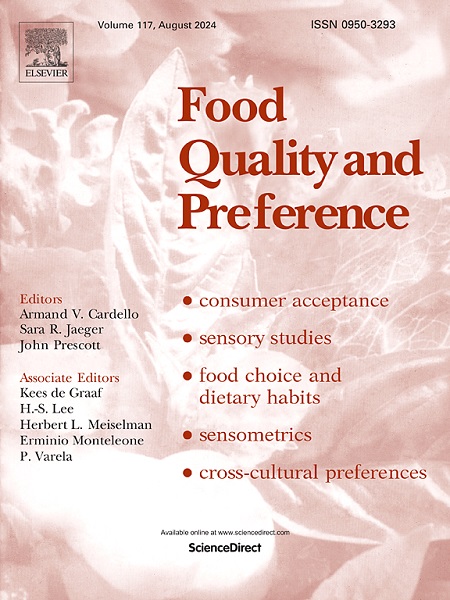评估健康标签对网上食品选择的影响
IF 4.9
1区 农林科学
Q1 FOOD SCIENCE & TECHNOLOGY
引用次数: 0
摘要
在线外卖平台提供了方便的食物获取渠道,其重要性在过去几年中急剧增加。我们的研究探讨了在人们被告知过量的卡路里、脂肪、碳水化合物和盐后,通过外卖应用选择的食物是否以及如何改变。我们的研究结果对公众健康和食物选择具有实际意义。我们基于中国在线提供的实际膳食设计了一个有效的陈述选择实验,并将其应用于随机受试者之间设计,对中国10个大城市的964名受访者进行了抽样调查。我们将样本分成两组:接触和不接触颜色代码,交通灯信息系统(TLS)。我们的分析使用了差中之差模型和误差成分混合Logit模型,结果显示,接触到营养信息的受访者选择了脂肪、盐和卡路里更少的外卖菜单。然而,这些信息并没有影响人们选择富含碳水化合物的美味食物,因为碳水化合物在典型的中国饮食中太重要了。我们还发现,价格、正面评价和送货时间是受访者选择食物的驱动因素,但其重要性明显低于食物偏好和味道。关于TLS,我们确认红色(即危险)在劝阻顾客选择不健康食品(盐和脂肪)方面的影响最为显著。这些发现有助于制定公共政策,使人们养成更健康的食品消费习惯。本文章由计算机程序翻译,如有差异,请以英文原文为准。
Assessing the effect of health labels on online food choices
Online takeaway platforms provide a convenient access to food and their importance has increased dramatically in the last years. Our research explores if and how food choices via takeaway apps change after individuals are informed about excessive calories, fats, carbohydrates, and salts. Our results have practical implications for public health and food choices. We designed an efficient stated choice experiment based on actual meals offered online in China and applied it in a Randomized Between-Subjects Design to a sample of 964 respondents across 10 large Chinese cities. We split the sample into two groups: exposed and not exposed to a colour-code, traffic light information system (TLS). Our analysis, using a Difference-in-Differences model and an Error Components Mixed Logit model, revealed that respondents exposed to nutrition information chose takeaway menus with less fat, salt and calories. However, the information did not affect the choice of tasty meals heavy in carbohydrates, as these are far too important in the typical Chinese diet. We also found that price, positive reviews, and delivery time were drivers of the respondents' food choices, but significantly less important than food preferences and tastiness. Regarding TLS, we confirmed that red (i.e. danger) had the most significant impact in dissuading customers from choosing unhealthy food (salt and fat). These findings are helpful in the design of public policies geared toward healthier food consumption habits in the population.
求助全文
通过发布文献求助,成功后即可免费获取论文全文。
去求助
来源期刊

Food Quality and Preference
工程技术-食品科技
CiteScore
10.40
自引率
15.10%
发文量
263
审稿时长
38 days
期刊介绍:
Food Quality and Preference is a journal devoted to sensory, consumer and behavioural research in food and non-food products. It publishes original research, critical reviews, and short communications in sensory and consumer science, and sensometrics. In addition, the journal publishes special invited issues on important timely topics and from relevant conferences. These are aimed at bridging the gap between research and application, bringing together authors and readers in consumer and market research, sensory science, sensometrics and sensory evaluation, nutrition and food choice, as well as food research, product development and sensory quality assurance. Submissions to Food Quality and Preference are limited to papers that include some form of human measurement; papers that are limited to physical/chemical measures or the routine application of sensory, consumer or econometric analysis will not be considered unless they specifically make a novel scientific contribution in line with the journal''s coverage as outlined below.
 求助内容:
求助内容: 应助结果提醒方式:
应助结果提醒方式:


